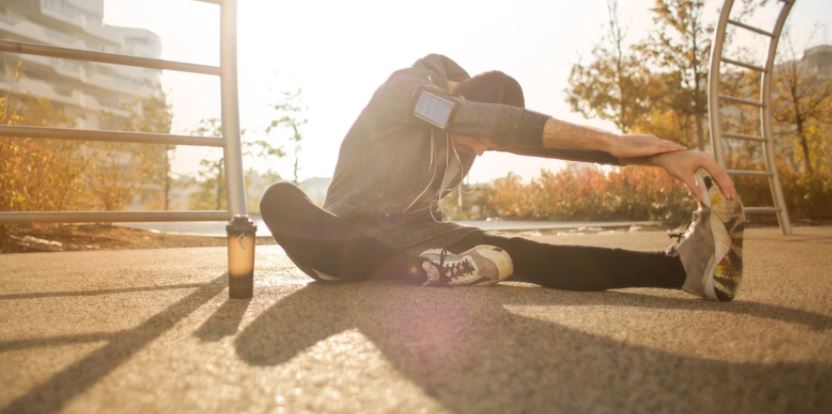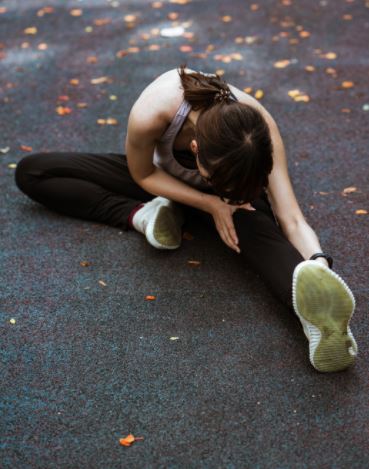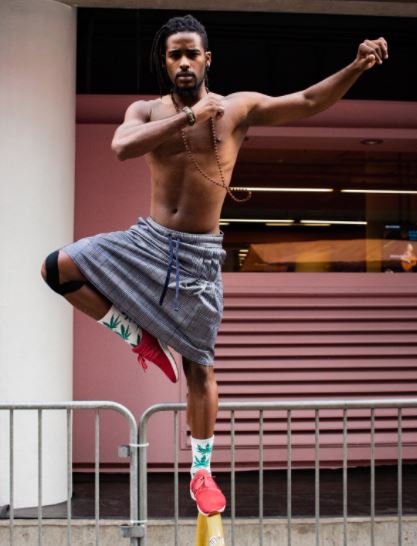How Important Is Flexibility For Runners?
Runners often ask :
– How Important Is Flexibility For Runners?
– How to Improve my Flexibility?
Running, especially for marathon winners, is usually a big deal, and flexibility really determines runners’ success.
Have you ever watched runners before the competition starts? Flexibility exercises are part of the warm-up and should be dynamic. Generally, they have to conduct some exercises before they start a competition. As people run, their joints tighten, and the same happens to connective tissues in the body.

When it comes to strength, the muscles and joints determine how inflexible a person can be. People with flexible bodies have low injuries because the body adapts to bendy activities at all degrees.
What Does Flexibility Entail?
The big question is, what exactly does flexibility entail?
Generally, flexibility entails how a body’s connective tissue has a passive range of motion. It’s a passive strength because it involves how you let gravity or a stretch in your muscles to take a certain position. It differs from mobility because this needs strength or efficiency for people to move through certain motion ranges.

Why Is Flexibility Important?
Many people wonder what boosts athletes’ running performance, and the truth is that mobility and flexibility play a key role in running. The static or dynamic flexibility varies from person to person, which depends on the body’s ability to push beyond certain limits.
Typically, flexibility helps runners because running is usually a unilateral exercise, and it involves a series of leg leaps. When running, you let go of energy and give back energy as you run.
Flexibility is important, especially if you consider how your hips are involved during running. The energy required to keep a stable momentum of moving the hips and lift the knees easily depends on muscle flexibility. If you struggle controlling movements, this determines how inflexible you may be and vice versa.

Some people generally have stiff bodies while others have flexible bodies; hence, you may end up injured if you push your body beyond certain limits. There are some important parts of the body in the human body, and the ones involved during running are knees, legs, and calves.
People with low power and energy find it hard to push off their tendons and muscles. This, in turn, leads to low energy levels; hence these people can have trouble running, especially for competitions.
To leverage and emerge as a winner in running competitions, strides matter a lot, and without skills of flexibility, you cannot emerge as a winner.
How to Improve Flexibility as a Runner?
People think that you should have a gymnast level of flexibility to have full running benefits, but the truth is that you shouldn’t have supernatural powers to be a good runner. Naturally, flexibility is not inhibited by certain body tissues; hence seeking therapists’ advice can help you have some issues.
Through routine practices, you can easily improve your general flexibility as a marathon runner. Felxibility exercises should be included in your cool-down. Most winners of these running competitions can attest that you can easily attain your flexibility goals through habitual practices.
Therapies
The first step to improving flexibility as a runner should be seeking help from physical therapists. Therapists can give you tips on how to improve general flexibility.
Foam rolling
You can also work on physical fitness by conducting some home therapies. This includes foam rolling the legs to improve the lower back flexibility. At times, going to the gym can be quite expensive, and these costs can be evaded if you practice home workouts.
The gym costs can be unnecessarily expensive; hence taking home workout tutorials even from YouTube channels can help you save a lot!
Massages
You can incorporate some self-myofascial relief aspects, such as percussion guns, which help warm-ups before running. These warm-ups also help after running.
People think that they should spend a lot of time on a static stretch at an old age, but generally, you can implement healthy eating habits and the correct diet to get perfect results.
Incorporate regular exercises to work on muscles at the low range, strengthening muscles for easier motion.

Diet / Proteins
According to a clinical dietician from the British Dietetic Association, there’s no direct link between diet and improved flexibility, but adding protein post-exercise can greatly help improve flexibility as part of your diet. When collagen combines with Vitamin C, it decreases joint pain, supports tendons, and aids recovery.
Strength and conditioning / Yoga
If you are exercising to strengthen muscles, try some exercises that strengthen the body, and if you are a yoga person, don’t forget leg day. Lengthen muscles, but don’t miss any part of the body. Work out by strengthening the hips, arms, and legs muscles.
Mobility
Actively take the joints and all muscle flexors seriously as you work out. The best mobility workout can be done at home. This involves minor stretching dynamics that improve general body performance.
Hips and Glutes
Keep in mind that all exercises strengthen different muscles, and the commonly forgotten muscles are glute and hip tissues. When working out to attain flexibility as a runner, do not forget all these body muscles.
Alternative : Push-ups / skipping
Do continuous research to see various ways of improving performance as a flexible runner. You can add some minor exercises like skips and other minor warm-ups. People think that some heavy exercises work best for them, but even push-ups a day and skipping can really help out!

Conclusion
In conclusion, being a flexible runner takes more than just resilience in exercising. You should incorporate some intense exercises like running or speeding at least a few days a week to build strong muscles.
Generally, there are some ways to improve and maintain flexibility without being a gym shark or yoga fan. Consistency definitely matters, but you can also try a few stretches every few seconds in a day. This will yield more positive results than being a consistent user of one type of exercise.
Integrate flexibility in your cool-down after each training session. The stretches of the body is taking only 6 minutes.
Technically, attaining flexibility as a runner is a complex situation; hence there are many steps to take. It’s generally a long way, but many successful athletes can attest that these techniques work effectively. So what do you think of it? Do let us know.
